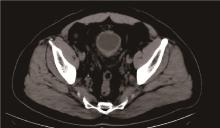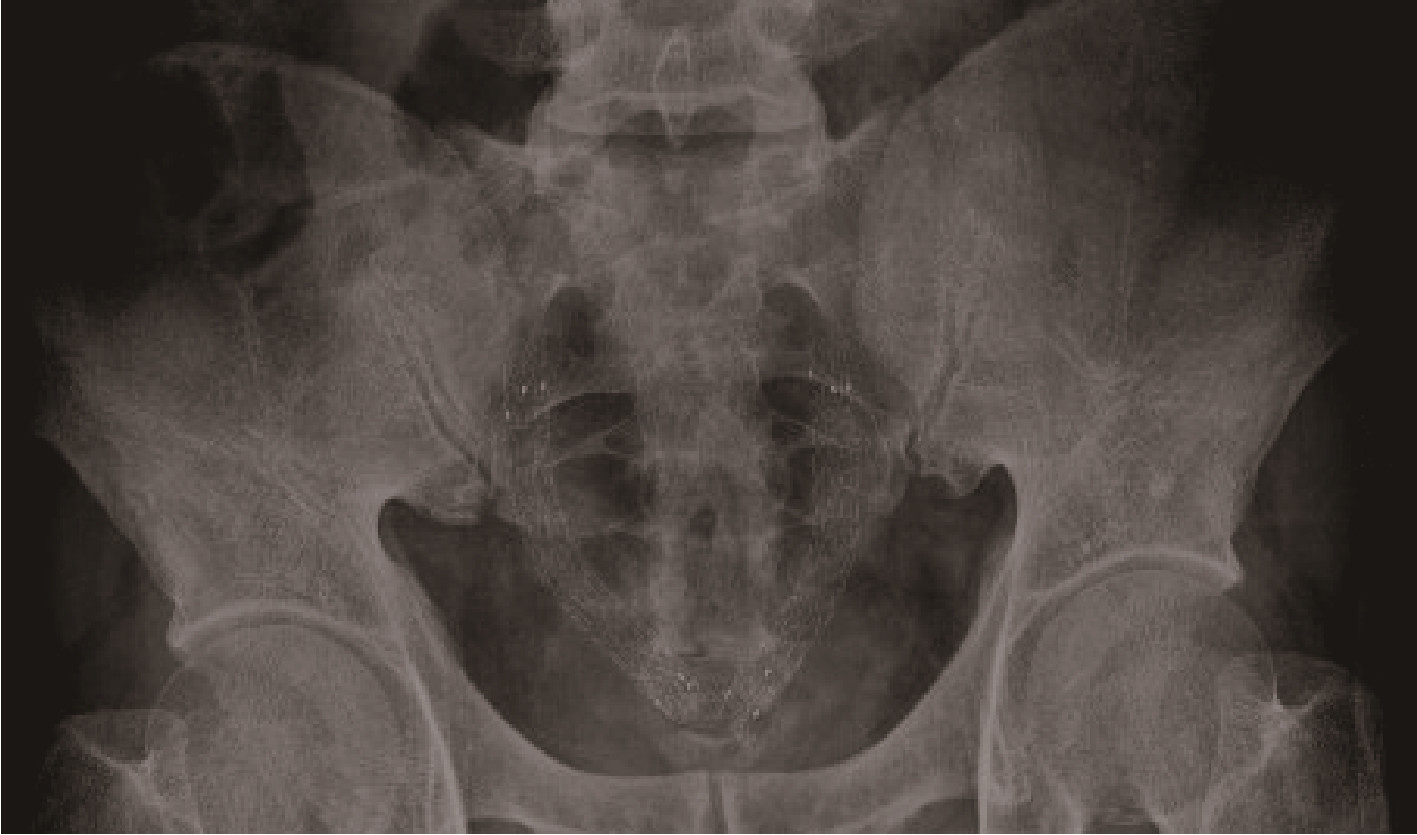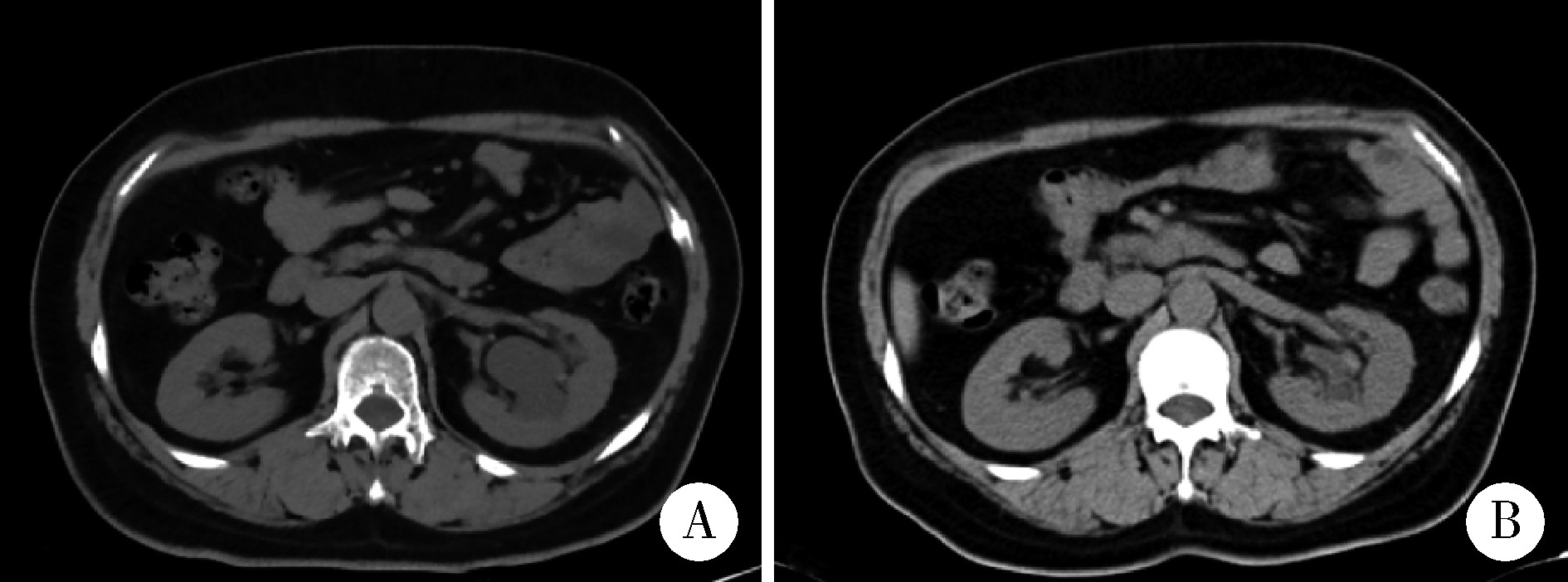Journal of Peking University (Health Sciences) ›› 2024, Vol. 56 ›› Issue (5): 919-922. doi: 10.19723/j.issn.1671-167X.2024.05.026
Previous Articles Next Articles
Efficacy of coated metal ureteral stent in the treatment of pelvic lipomatosis induced hydronephrosis
Mingrui WANG, Qi WANG, Hao HU*( ), Jinhui LAI, Xinwei TANG, Chunyan WAN, Kexin XU, Tao XU
), Jinhui LAI, Xinwei TANG, Chunyan WAN, Kexin XU, Tao XU
- Department of Urology, Peking University People's Hospital; The Institute of Applied Lithotripsy Technology, Peking University, Beijing 100044, China
CLC Number:
- R692.2
| 1 |
Prabakaran R , Abraham G , Kurien A , et al. Pelvic lipomatosis[J]. Kidney Int, 2016, 90 (2): 453.
doi: 10.1016/j.kint.2016.05.009 |
| 2 |
周祥福, 高新, 方友强, 等. 盆腔脂肪增多症诊治分析[J]. 中华泌尿外科杂志, 2005, 26 (2): 125- 129.
doi: 10.3760/j:issn:1000-6702.2005.02.016 |
| 3 |
Sercan Ö . Pelvic lipomatosis associated with portal vein thrombosis and hydronephrosis: A case report[J]. J Int Med Res, 2019, 47 (6): 2674- 2678.
doi: 10.1177/0300060519840912 |
| 4 | Baas W , O'Connor B , El-Zawahry A . Bilateral hydronephrosis and acute kidney injury secondary to pelvis lipomatosis[J]. Can J Urol, 2018, 25 (1): 9217- 9219. |
| 5 | 方露, 于德新, 王毅, 等. 腹腔镜手术治疗盆腔脂肪增多症1例报告并文献复习[J]. 临床泌尿外科杂志, 2016, 31 (7): 660- 662. |
| 6 |
徐涛, 赵卫红, 王晓峰, 等. 盆腔脂肪增多症两例兄弟患者报道及文献分析[J]. 北京大学学报(医学版), 2007, 39 (4): 355- 360.
doi: 10.3321/j.issn:1671-167x.2007.04.006 |
| 7 |
Lange D , Bidnur S , Hoag N , et al. Ureteral stent-associated complications: Where we are and where we are going[J]. Nat Rev Urol, 2015, 12 (1): 17- 25.
doi: 10.1038/nrurol.2014.340 |
| 8 | 刘喆, 欧阳骏. 盆腔脂肪增多症的诊断和治疗[J]. 临床泌尿外科杂志, 2013, 28 (1): 13- 15. |
| 9 |
Chen Y , Yang Y , Yu W , et al. Urodynamic characteristics of pelvic lipomatosis with glandular cystitis patients correlate with morphologic alterations of the urinary system and disease severity[J]. Neurourol Urodyn, 2018, 37 (2): 758- 767.
doi: 10.1002/nau.23343 |
| 10 |
Fiuk J , Bao Y , Calleary JG , et al. The use of internal stents in chronic ureteral obstruction[J]. J Urol, 2015, 193 (4): 1092- 1100.
doi: 10.1016/j.juro.2014.10.123 |
| 11 |
Bahouth Z , Moskovitz B , Halachmi S , et al. Allium stents: A novel solution for the management of upper and lower urinary tract strictures[J]. Rambam Maimonides Med J, 2017, 8 (4): e0043.
doi: 10.5041/RMMJ.10313 |
| 12 | Bahouth Z , Meyer G , Halachmi S , et al. Multicenter experience with Allium ureteral stent for the treatment of ureteral stricture and fistula[J]. Harefuah, 2015, 154 (12): 753- 756. |
| 13 | Leonardo C , Salvitti M , Franco G , et al. Allium stent for treatment of ureteral stenosis[J]. Minerva Urol Nefrol, 2013, 65 (4): 277- 283. |
| 14 |
董文敏, 王明瑞, 胡浩, 等. Allium覆膜金属输尿管支架长期留置治疗输尿管-回肠吻合口狭窄的初期临床经验及随访结果[J]. 北京大学学报(医学版), 2020, 52 (4): 637- 641.
doi: 10.19723/j.issn.1671-167X.2020.04.007 |
| 15 |
王明瑞, 胡浩, 王起, 等. Allium覆膜金属输尿管支架长期留置治疗放疗后输尿管狭窄的有效性和安全性[J]. 中华泌尿外科杂志, 2020, 41 (12): 921- 926.
doi: 10.3760/cma.j.cn112330-20200623-00488 |
| [1] | Silu CHEN, Haiju WANG, Yucai WU, Zhihua LI, Yanbo HUANG, Yuhui HE, Yangyang XU, Xuesong LI, Hua GUAN. Etiological analysis of hydronephrosis in adults: A single-center cross-sectional study [J]. Journal of Peking University (Health Sciences), 2024, 56(5): 913-918. |
| [2] | Cai-peng QIN,Fei WANG,Yi-qing DU,Xiao-wei ZHANG,Qing LI,Shi-jun LIU,Tao XU. Diagnosis and treatment of four cases of asymptomatic and non-hydrous ureteral calculi [J]. Journal of Peking University (Health Sciences), 2023, 55(5): 939-942. |
| [3] | Shi-bo LIU,Hui GAO,Yuan-chun FENG,Jing LI,Tong ZHANG,Li WAN,Yan-ying LIU,Sheng-guang LI,Cheng-hua LUO,Xue-wu ZHANG. Clinical features of hydronephrosis induced by retroperitoneal fibrosis: 17 cases reports [J]. Journal of Peking University (Health Sciences), 2020, 52(6): 1069-1074. |
| [4] | HE Chong-Jun, QIN Cai-Peng, LI Jian-Xing, XIONG Liu-Lin, XU Qing-Quan, YANG Bo, XU Tao, HUANG Xiao-Bo, WANG Xiao-Feng. Diagnosis and treatment of hydrocephalus-accompanied renal calculi complicated with renal tumor: 5 case reports [J]. Journal of Peking University(Health Sciences), 2014, 46(4): 558-562. |
| [5] | YU Lu-Ping, XU Tao, HUANG Xiao-Bo, WANG Xiao-Feng. Pathogenesis and therapy of hydronephrosis after hematopoietic stem cell transplantation [J]. Journal of Peking University(Health Sciences), 2014, 46(4): 552-557. |
|
||





